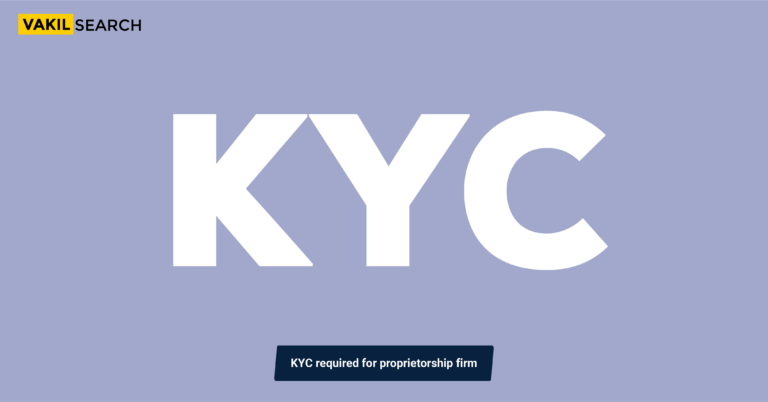Sole proprietorships do not have a turnover limit in India. However, there are other factors that can affect the compliance requirements and tax liability of sole proprietors, such as the type of business and the amount of income.
Definition of Turnover Limit for Sole Proprietorship
A Turnover Limit for Sole Proprietorship is a business structure in which one person owns and operates the business. It is the most common type of business structure in the United States, accounting for over 70% of all businesses. Sole proprietorships are easy to start and maintain, and they offer several advantages, including:
- Simplicity: Sole proprietorships are easy to set up and operate. No formal paperwork is required to start a sole proprietorship, and sole proprietors are not required to hold separate business bank accounts or tax accounts.
- Flexibility: Sole proprietors have complete control over their businesses. They can decide everything from products and services to pricing and marketing.
- Pass-through taxation: Sole proprietors pay income tax on their business profits on their tax returns. This means the business is not taxed separately, and sole proprietors can avoid double taxation.
However, sole proprietorships also have some disadvantages, including:
- Unlimited liability: Sole proprietors are personally liable for all business debts and liabilities. If the business is sued or goes bankrupt, the sole proprietor’s assets could be at risk.
- Lack of benefits: Sole proprietors must be eligible for employee benefits such as health insurance and paid time off.
- Difficulty raising capital: It can be difficult for sole proprietors to raise capital from investors or lenders.
Importance of Understanding Turnover Limit for Sole Proprietorship
Turnover limits are the maximum amount of business income that a sole proprietorship can have without being required to comply with certain tax and regulatory requirements. Turnover limits vary depending on the country or state in which the business is located.
In India, the turnover limit for sole proprietorships is ₹2 crore (approximately USD 250,000) for the financial year 2023-24. Sole proprietorships exceeding the turnover limit must get their accounts audited by a chartered accountant.
Understanding turnover limits is important for sole proprietors because it can help them to:
- Avoid compliance issues and penalties.
- Make informed decisions about their business growth.
- Plan for their future tax obligations.
Importance of Understanding Turnover Limits for Sole Proprietorship
There are several reasons why it is important for sole proprietors to understand turnover limits:
- Compliance requirements: Sole proprietorships that exceed the turnover limit are required to comply with certain additional tax and regulatory requirements, such as getting their accounts audited by a chartered accountant. Failure to comply with these requirements can result in penalties.
- Business growth decisions: Understanding turnover limits can help sole proprietors to make informed decisions about their business growth. For example, a sole proprietor approaching the turnover limit may need to consider restructuring their business as a Limited Liability Partnership (LLP) to protect their personal assets.
- Tax planning: Sole proprietors can use their understanding of turnover limits to plan for future tax obligations. For example, a sole proprietor who expects to exceed the turnover limit in the coming financial year can save up for the additional taxes they will be liable to pay.
Understanding turnover limits can also help sole proprietors to:
- Attract investors and lenders: Investors and lenders are more likely to invest in or lend money to businesses with a good understanding of their financial obligations. Understanding turnover limits can help sole proprietors demonstrate to investors and lenders that they are responsible and financially savvy business owners.
- Increase their creditworthiness: Sole proprietors with a good understanding of turnover limits are more likely to be approved for loans and other forms of credit at competitive interest rates.
- Plan for their future retirement: Sole proprietors can use their understanding of turnover limits to plan for their future retirement. For example, a sole proprietor who is approaching retirement age may need to start saving more money for retirement if they expect their income to decrease when they retire.
What is Turnover in a Sole Proprietorship?
Explanation of Business Turnover
- Business turnover is the total amount of revenue that a business generates over a specified period of time, usually one year. Turnover is also known as sales or income.
- Turnover is calculated by adding up all of the revenue that a business earns from the sale of goods or services, as well as any other sources of income, such as interest or dividends.
How Turnover Relates to Business Revenue
- Revenue is the total amount of money a business earns from selling goods or services. Turnover is the total amount of revenue a business generates over a specified period, usually one year.
- In other words, revenue is a snapshot of a business’s financial performance at a specific point in time. At the same time, turnover is a measure of a business’s financial performance over some time.
Why Turnover Matters for Turnover Limit for Sole Proprietorship
- Turnover matters for sole proprietors because it is a key indicator of their business’s financial health. A high turnover indicates that the business is profitable and growing. A low turnover, on the other hand, may indicate that the business is struggling financially.
- Turnover is also important for sole proprietors because it determines their tax liability. In India, sole proprietors are required to pay income tax on their business profits. The higher the turnover, the higher the tax liability.
- In addition, turnover can affect a sole proprietor’s ability to obtain loans and other forms of credit. Lenders are more likely to lend money to businesses with a high turnover and a good track record of profitability.
Here Are Some Specific Reasons Why Turnover Matters for Sole Proprietors:
- Tax liability: As mentioned above, turnover is a key factor in determining a sole proprietor’s income tax liability.
- GST registration: Sole proprietors in India are required to register for GST if their turnover exceeds INR 20 lakh (approximately USD 25,000) per year.
- Business growth: A high turnover can help sole proprietors to finance their business growth and expand their operations.
- Attracting investors and lenders: Investors and lenders are more likely to invest in or lend money to businesses with a high turnover.
- Increasing creditworthiness: Sole proprietors with a high turnover are more likely to be approved for loans and other forms of credit at competitive interest rates.
- Planning for the future: Sole proprietors can use their turnover data to plan for their future financial security, such as retirement.
Turnover Limits for Sole Proprietorship
-
Is There a Standard Turnover Limit?
There is no standard turnover limit for sole proprietorships. Turnover limits vary depending on the country or state in which the business is located.
In India, the turnover limit for sole proprietorships is INR 2 crore (approximately USD 250,000) for the financial year 2023-24.
-
Variations in Turnover Limits by Jurisdiction
Turnover limits for sole proprietorships can vary significantly from one jurisdiction to another. For example, in the United States, the turnover limit for sole proprietorships is USD 1 million per year. In the United Kingdom, the turnover limit for sole proprietorships is GBP 85,000 per year.
Common Factors Affecting Turnover Limit for Sole Proprietorship
There are a number of factors that can affect Turnover Limit for Sole Proprietorship, including:
- The size and complexity of the economy: Turnover limits for sole proprietorships are typically higher in countries and states with larger and more complex economies.
- The level of economic development: Turnover limits for sole proprietorships are also typically higher in countries and states with higher levels of economic development.
- The administrative costs of compliance: Governments may set turnover limits for sole proprietorships in order to reduce the administrative costs of compliance.
- The need to protect consumers: Governments may set turnover limits for sole proprietorships in order to protect consumers from unscrupulous business practices.
Read more: All You Need To Know About Sole Proprietorship
Consequences of Exceeding Turnover Limit for Sole Proprietorship
Legal Implications
1. Taxation
- The most significant legal implication of exceeding turnover limits is the increase in tax liability. Sole proprietors in India are required to pay income tax on their business profits. The higher the turnover, the higher the tax liability.
- In addition, sole proprietors who exceed the turnover limit may be required to comply with additional tax requirements, such as getting their accounts audited by a chartered accountant.
2. Business Registration
- In India, sole proprietors are required to register for GST if their turnover exceeds INR 20 lakh (approximately USD 25,000) per year. Sole proprietors who exceed the turnover limit and fail to register for GST may be subject to penalties.
Compliance Requirements
Sole proprietors who exceed the turnover limit may be required to comply with additional legal and regulatory requirements. For example, they may be required to get their accounts audited by a chartered accountant and file additional tax returns.
Impact on Business Operations
Exceeding turnover limits can also have a number of practical implications for sole proprietors. For example, they may need to hire additional staff to help them manage their business and comply with all of the applicable legal and regulatory requirements.
In addition, sole proprietors who exceed the turnover limit may find it more difficult to obtain loans and other forms of credit from lenders. This is because lenders are more likely to lend money to businesses with a good track record of compliance and financial stability.
Overall, there are a number of legal, compliance, and practical implications for sole proprietors who exceed turnover limits. It is important for sole proprietors to be aware of these implications and to take steps to comply with all of the applicable legal and regulatory requirements.
Here are some specific examples of the consequences of exceeding turnover limits for sole proprietors:
- Increased tax liability: Sole proprietors who exceed the turnover limit may be subject to higher income tax rates and additional tax requirements, such as getting their accounts audited by a chartered accountant.
- Failure to register for GST: Sole proprietors who exceed the turnover limit and fail to register for GST may be subject to penalties.
- Additional compliance requirements: Sole proprietors who exceed the turnover limit may be required to comply with additional legal and regulatory requirements, such as getting their accounts audited by a chartered accountant and filing additional tax returns.
- Difficulty obtaining loans and credit: Sole proprietors who exceed the turnover limit may find it more difficult to obtain loans and other forms of credit from lenders.
- Increased risk of fraud and other financial irregularities: Sole proprietors who exceed the turnover limit may be at an increased risk of fraud and other financial irregularities, as they may have less time and resources to devote to internal controls.
Recommendations for Sole Proprietors
Sole proprietors should take the following steps to avoid the consequences of exceeding turnover limits:
- Monitor their turnover regularly: Turnover Limit for Sole Proprietorship should track their turnover on a regular basis to ensure that they do not exceed the applicable limits.
- Seek professional advice: Sole proprietors who are approaching the turnover limit should seek professional advice from a qualified accountant or tax advisor to understand their legal and regulatory obligations.
- Take steps to reduce their turnover: If necessary, sole proprietors may need to take steps to reduce their turnover, such as reducing their hours of operation or offering fewer products or services.
- Consider restructuring their business: Sole proprietors who expect to exceed the turnover limit in the long term may want to consider restructuring their business as a Limited Liability Partnership (LLP) or another business entity offering limited liability protection.
Strategies for Managing Turnover in Sole Proprietorship
Tracking Business Turnover
The first step to managing turnover in a sole proprietorship is to track it regularly. This can be done by keeping accurate financial records and using accounting software to generate reports. By tracking turnover, sole proprietors can identify trends and patterns, which can help them make informed decisions about their business.
Tax Planning and Compliance
As mentioned above, turnover significantly impacts a sole proprietor’s tax liability. Sole proprietors should, therefore, develop a tax plan and work with a qualified accountant or tax advisor to ensure they comply with all applicable tax laws and regulations.
Expansion and Growth Considerations
If a sole proprietorship is growing rapidly, it may be necessary to consider expanding the business or restructuring it as a different type of business entity. Expansion may require hiring additional staff and finding new sources of capital. Restructuring the business may involve converting the sole proprietorship to a Limited Liability Partnership (LLP) or another business entity offering limited liability protection.
Case Studies
Real-life Examples of Sole Proprietors Navigating Turnover Limits
Case Study 1:
Business: Freelance web designer
Turnover limit: INR 2 crore
Strategy:
The freelance web designer in this case study was approaching the turnover limit for sole proprietors in India. She decided to raise her prices and offer premium services to avoid exceeding the limit. She also expanded her target market to include larger businesses and corporations.
Result:
The freelance web designer was able to increase her turnover while still staying below the limit. She also improved her profit margins and attracted more high-value clients.
Case Study 2:
Business: Online retailer
Turnover limit: INR 2 crore
Strategy:
The online retailer in this case study was growing rapidly and was approaching the turnover limit for sole proprietors in India. The retailer decided to restructure its business as a Limited Liability Partnership (LLP) to accommodate its growth. This allowed the retailer to raise additional capital and expand its operations.
Result:
The online retailer was able to successfully restructure its business and continue growing rapidly. The retailer also benefited from the limited liability protection that LLPs offer.
Lessons Learned from Successful Sole Proprietors
- Plan ahead: Turnover Limit for Sole Proprietorship should start planning for their future turnover early on. This will help them to avoid exceeding the limit and to make informed decisions about their business growth.
- Be flexible: Sole proprietors need to be flexible and adaptable. This is especially important when it comes to managing turnover. For example, a sole proprietor may need to adjust their prices or target market if they are approaching the turnover limit.
- Seek professional advice: Sole proprietors should seek professional advice from a qualified accountant or tax advisor to ensure that they are complying with all applicable tax laws and regulations.
Pitfalls to Avoid
- Exceeding the turnover limit: Exceeding the turnover limit can have a number of negative consequences, including increased tax liability, penalties, and difficulty obtaining loans and credit.
- Failing to comply with tax laws and regulations: Failing to comply with tax laws and regulations can result in penalties and interest charges.
- Not planning for business growth: If a sole proprietorship is growing rapidly, it is important to plan for the future. This may involve expanding the business or restructuring it as a different type of business entity.
How to Stay Informed and Compliant
Resources for Keeping Up with Regulatory Changes
There are a number of resources available to help Turnover Limit for Sole Proprietorship stay informed about regulatory changes. These resources include:
- Government websites: The websites of government agencies, such as the Income Tax Department of India, provide information on tax laws and regulations.
- Professional organizations: Professional organizations, such as the Institute of Chartered Accountants of India, also provide information and resources to their members.
- Trade publications: Trade publications can also be a good source of information about regulatory changes.
Seeking Professional Advice
Sole proprietors should also seek professional advice from a qualified accountant or tax advisor to ensure that they are complying with all applicable tax laws and regulations. Talk to our experts today!
Networking and Learning from Peers
Networking with other sole proprietors and business owners can also be a good way to stay informed about regulatory changes and learn from the experiences of others.
Conclusion
This blog has covered a number of important topics related to Turnover Limit for Sole Proprietorship, including:
- The definition of a sole proprietorship and the importance of understanding turnover limits
- The factors that affect turnover limits
- The consequences of exceeding turnover limits
- Strategies for managing Turnover Limit for Sole Proprietorship
- Tips for staying informed and compliant
It is important for Turnover Limit for Sole Proprietorship to understand turnover limits because they can have a significant impact on their business. Exceeding turnover limits can result in increased tax liability, penalties, and difficulty obtaining loans and credit.
Turnover Limit for Sole Proprietorship should, therefore, track their turnover regularly and make informed decisions about their business growth. If a sole proprietorship is growing rapidly, it may be necessary to expand the business or restructure it as a different type of business entity.
By proactively managing turnover, Turnover Limit for Sole Proprietorship can avoid the negative consequences of exceeding the limit and ensure that their business is compliant with all applicable tax laws and regulations.
Turnover Limit for Sole Proprietorship can also benefit from seeking professional advice from a qualified accountant or tax advisor. Overall, understanding and managing Turnover Limit for Sole Proprietorship is an important aspect of running a successful sole proprietorship.










